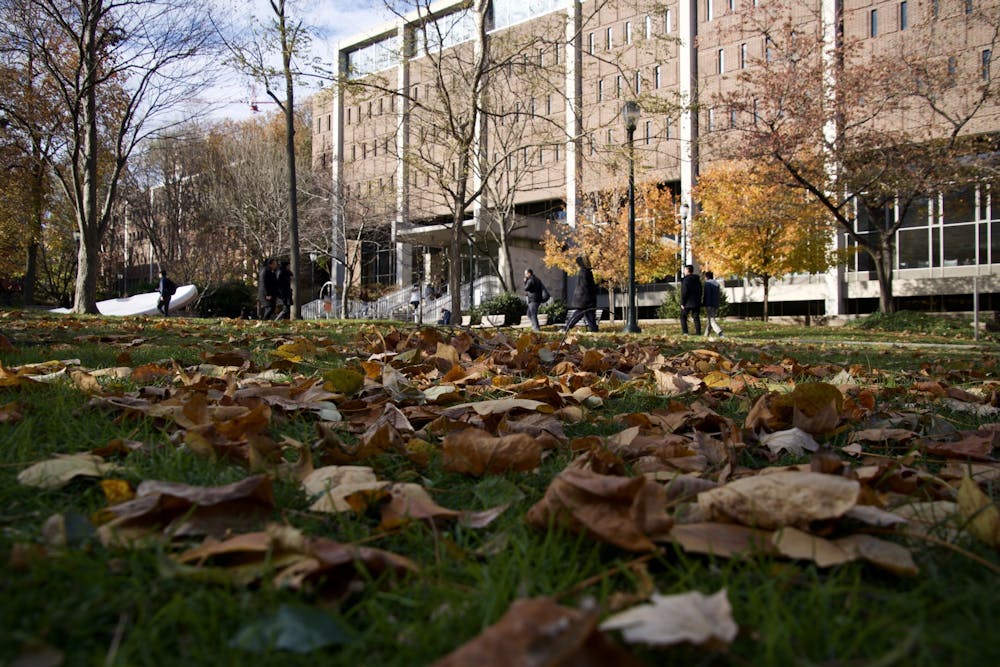The Penn community is stuck on hold, waiting for more information to make substantive decisions on our futures. While Thursday’s email from the Penn administration was surprisingly transparent, it was basically a menu of options that ranged from mediocre to downright disappointing.
While I, probably like many of you, want to go back to campus come fall, the email outlined conditions for return that make it look less than likely. To be clear, I am not advocating for an online semester, but instead suggesting that, from a practical point-of-view, an online semester may be more likely than the email lets on.
All of our on-campus scenarios revolve around a “Public Health Social Compact” – which would require we wear masks and avoid groups of 25 or more – and a regular testing regiment. For such simple guidelines, they also fill me with uncertainty because they hinge on resources few of us have at this time: testing supplies and self discipline.
Testing is one of the most important metrics in making a decision. At our current rate, even Penn’s vast financial and physical resources are not enough to test anything more than a small fraction of our community. Even if Penn was able to administer 12,000 tests per day, Pennsylvania’s per-day high last week, we could only get a momentary snapshot into a population of the size of the graduate students alone.
Without a doubt, Penn’s testing capacity will substantially increase come September. But will it be enough to test huge numbers of our already large community regularly? Public health officials say no. Even South Korea, which has been lauded as having one of the best responses to the virus via mass testing, tested 16,000 people per day at a time when outbreaks were relatively isolated.
Our residential system doesn’t help much either. The University of California system predicted that between one-third and one-half of its dorms would not reopen. While the UC system is far larger than Penn, applying those predictions to us would mean the 6,500 students that typically live on campus would have to be reduced by two to three thousand students. For perspective, the high rises each house less than 800 students. Unless the university converted huge amounts of property to safe (not to mention pleasant) dorms, an untold number of students would not have housing.
While other parts of Penn, such as the scientific research division, are able to slowly start bringing people in to resume normal activities, the key to their reopening hinges on people who suspect sickness staying home and continuing telework as much as possible. Even in a division that already follows strong hygienic guidelines every day and does not (typically) have staff living together, a careful tread into “Phase 1” territory still sees the vast majority of staff staying home. This should be an important indicator for the rest of Penn.
Even if Penn was able to find safe housing in a rearranged residential plan, all students would have to respect the limitation on gatherings of 25 or more people. I wrote at the beginning of this pandemic that “our campus, no matter how far apart, must stick together.” We’ve missed each other so much that an in-person return may make “sticking together” a hard-to-resist temptation and no amount of physical rearranging can change that.
SEE MORE FROM ALFREDO PRACTICÒ:
Alfredo Praticò | I Chose Penn, That Doesn’t Mean You Have To
Alfredo Praticò | Our campus community is at the breaking point – it’s up to us to keep it together.
Alfredo Praticò | An open letter to Erika James, from a College student
Dartmouth’s first case came from a student who, despite showing COVID-19 symptoms, attended a party soon after. While it might be hard to imagine a person who shows symptoms going to a party today, after 100,000 deaths, this week 250 young people gathered on a Philadelphia block to party, still in the height of the pandemic. The proposed cap on gatherings is the right thing to do, but I have strong doubts that all Penn students would honor that for a semester, shortened or otherwise.
But the biggest variable in any decision making is time. The difficulty in making the right choice is that it has to accurately predict a future months away. If, come fall, there is a resurgence of cases, Penn has to be accountable and manage the ensuing public health and logistics crisis.
We’ve already seen a number of colleges and universities announce plans for the fall. But we’ve also seen announced plans change quickly. When this started, Yale announced that online classes would be only temporary, which changed later when the rest of academia shuttered. Other institutions’ plans provide useful insight, but they also have to be taken with a grain of salt.
While it may be hard to imagine a return to on-campus life, Penn can still do more for students. As the DP’s Editorial Board argued, vulnerable members of our community must be given on-campus accommodations. While Penn’s financial situations are tight, it should not fall to the students – or their families – to underwrite a national financial meltdown. No matter what Penn announces, it will be a surprise and a far cry from the normal semesters of the past. But if the call is another online semester, we have to understand it from a point of logistical necessity and hope it accelerates our return to normalcy.

ALFREDO PRATICÒ is a rising sophomore in the College studying History and Sociology from Philadelphia. His email is pratico@sas.upenn.edu.
Alfredo Praticò is the 137th Opinion Editor for the Daily Pennsylvanian is formerly wrote a column entitled The Angry Philadelphian. His email is pratico@thedp.com.









